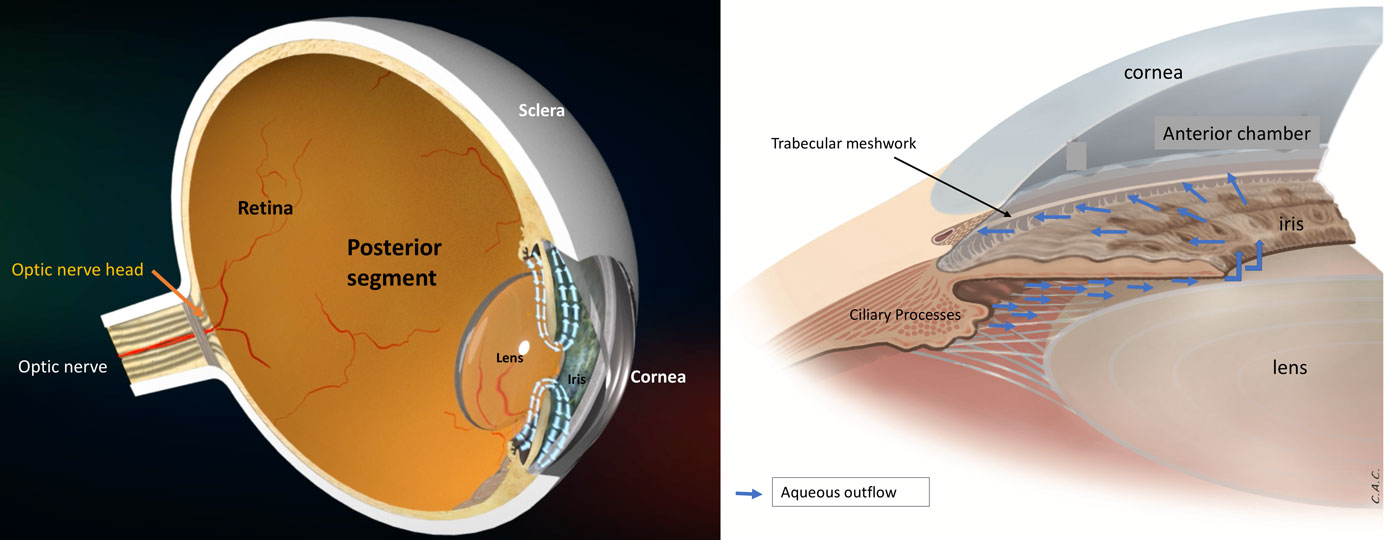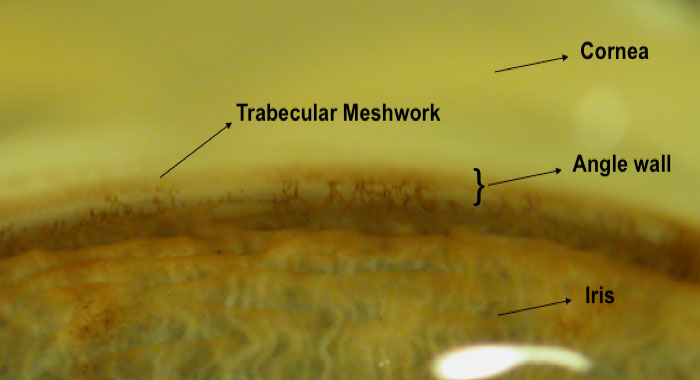As in all forms of glaucoma, the end-organ damage is the optic nerve head. A sufficiently elevated IOP will damage the optic nerve, which is the structure that connects what the eyes see to the brain.
The “angle” is the part of the eye where the iris meets the cornea and the sclera. The drainage system of the eye is located at this region – trabecular meshwork, which consists of multiple layers of collagenous connective tissue. The trabecular beams form a net like structure that creates layers with large and small spaces within the beams.
The open angle glaucoma, as the term suggests, is characterized by an open angle. Nothing obstructs the flow of the aqueous humor to get to the trabecular meshwork, however, abnormalities within the spaces of the trabecular meshwork system lead to increase of the resistance to flow of fluid. The fluid pressure within the eye (IOP) gets elevated, and usually without any symptoms, gradually damages the optic nerve.



